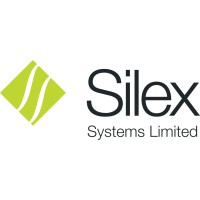Australia’s Silex Systems has completed an eighty one million dollar institutional placement to further develop its laser based uranium enrichment technology. Silex is working on laser separation of chemical isotopes. It hopes that the equity funding will enable it to accelerate commercialization of the technology. Silex is located at the Australia Nuclear Science & Technology Organization (ANSTO) in Lucas Heights, Sydney. It has been collaborating for several years with Global Laser Enrichment (GLE) based in the U.S. GLE is a joint venture of Silex and uranium producer Cameco. Cameco is the biggest publicly traded uranium fuel production company and is based in Canada.
The new funding arrived just a few months after Silex completed testing of the first full-scale laser system module developed for deployment in GLE’s commercial pilot demonstration facility. GLE released a statement that this represented “an important milestone in the development of commercial-scale equipment for GLE’s quest to become the only third-generation laser uranium enrichment company in the world”.
The Silex module has been shipped to the U.S. and installed at GLE's Test Loop Facility at Wilmington in North Carolina. GLE is the exclusive worldwide licensee for the Silex laser uranium enrichment technology.
Michael Goldsworthy is the CEO of Silex Systems. He described the new equity as “an exciting and transformational juncture” in the firm’s progress. He added that “This capital underpins a highly value-accretive acceleration in our various technology commercialization activities, at a time of increasing impetus to improve the security of the global nuclear fuel supply chain and to support a smooth transition toward decarbonization.”
Silex says that the new funding will also assist it in further developing two other potential uses of the new technology. It could be used to separate different forms of silicon for quantum computing. It could also be used to separate radioactive isotopes for nuclear medicine.
However, the nuclear fuel industry represents the best commercial opportunity for laser separation. In a 2022 report Silex stated that the U.S. nuclear industry typically imports about twenty percent of its enriched uranium fuel requirements from Russia. It has similar levels of acquisition in other parts of the Western nuclear industry. Europe is working to both reduce reliance on Russian gas and move away from fossil fuels leading to renewed interest in nuclear power generation.
Silex recently issued an operation update. It stated that “We believe Western nuclear fuel markets will undergo a fundamental realignment over the next 12-24 months towards a more resilient and sustainable footing, with the aim of becoming less dependent on, or free of, reliance on Russian and other state-owned nuclear fuel suppliers. We believe this realignment could endure for decades, given the renewed focus on long-term energy security.”
Geopolitical developments have stimulated Silex and Cameco to consider accelerating GLE’s prospective timeline. They had previously envisaged commercialization of laser enrichment technology by 2030. GLE has suggested that acceleration could involve completing the pilot demonstration by mid-2024. Commercial operations would begin in 2027. Bringing forward a commercial feasibility assessment and licensing activities is also a possibility.
